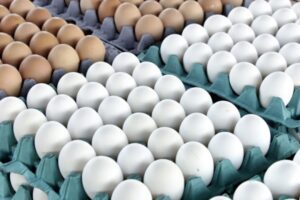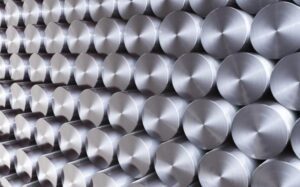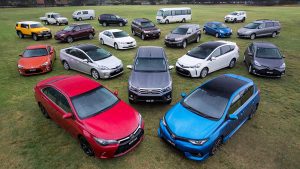
Primary registrations of new commercial vehicles (including trucks and special vehicles) in Ukraine in July increased by 38% compared to June of this year, to 593 units, Ukravtoprom reports.
According to a message on the Association’s Telegram channel, at the same time, compared to July last year, the market has decreased by 65%.
As reported, in June this year, this market decreased by 7% by May 2022 and by 3.4 times by June 2021 to 429 units.
According to Ukravtoprom, Volkswagen showed the best result in July with the registration of 66 cars (in July last year, the brand was in fifth place in the rating with 110 cars, in May 2022 it sold only 45 cars).
Second place belongs to Volvo – 65 registrations, third – to MAN with 64 cars.
Renault, the leader of last year’s July and May of this year, dropped to fourth position with 45 cars (against 417 a year earlier), and Hyundai closes the TOP-5, in the standings of which there are 43 cars.
According to Ukravtoprom, in January-July 2022, 3.8 thousand new commercial vehicles were registered in Ukraine, which is 2.2 times less than in the same period last year.
In turn, the AUTO-Consulting information and analytical group, analyzing separately the market for light commercial vehicles (gross weight up to 3.5 tons) and the truck market, notes that the first in July sharply (by 81%) decreased by July last year – to 289 units ., while the second “demonstrated record sales.”
In a message on the website, experts note that the position of the new market leader in light commercial vehicles (LCV) Volkswagen is significantly strengthening – in July it occupied 25% of this market segment with sales growth of 55% by July 2021.
Hyundai came in second place, ahead of Renault by one car.
At the same time, according to the group’s assessment, after the departure of Belarusian MAZ and Russian KAMAZ, the market for heavy-duty vehicles began to transform and European trucks seized the leadership.
In particular, Volvo Trucks became the leader with a share of 18.8%, MAN became the second with a share of 18.5%, and Scania was the third.
“In general, over seven months, the truck market in Ukraine decreased by 43.6%, but in July it was possible to minimize the fall to 33.6%. The market is recovering and recovering and showing the best recovery rates among the entire car market,” AUTO-Consulting notes.

Demand for eggs quadrupled in March in the LotOK convenience store chain, demand for pet products tripled, for groceries doubled, and for tobacco products and drinks and non-alcoholic beverages almost doubled. Demand for confectionery grew 1.5 times, but demand for vegetables and bakery products remained at the same level.
Such data was given in a commentary to Interfax-Ukraine by marketing director of the LotOK store chain Olha Momchylovych.
At the same time, she said that the demand structure of large supermarkets and convenience stores is significantly different.
“If in peacetime for small stores located in residential buildings and residential complexes, the top categories of demand are tobacco products, soft drinks, confectionery, dairy products and groceries, then in the first days of the war, groceries took the top position in demand, and eggs joined the top categories,” Momchylovych said.
At the same time, demand for dairy products temporarily decreased in March, which, the expert emphasized, was the result of a disruption in supply chains.
“In April, we see almost the full recovery of milk sales,” Momchylovych said.
At the same time, she predicts, April results in terms of the structure of demand will differ from March due to the lifting of restrictions on the sale of alcohol and alcoholic beverages, as well as the resumption of operation of a number of enterprises.
“During the first ten days of April, the demand for alcohol increased almost 2.5 times, the level of demand for eggs is still at the level of March, and the demand for groceries has returned to pre-war levels,” she said.

Global demand for steel in 2022 will increase by only 0.4% and amount to 1.84 billion tons (1.834 billion tons in 2021), the World Steel Association predicts.
In 2023, according to WSA expectations, steel demand will increase by 2.2%, to 1.881 billion tons.
The total demand for steel in the Russian Federation, CIS countries and Ukraine this year, according to WSA forecasts, will fall by 23.6% to 44.6 million tons (58.5 million tons in 2021). In 2023, an increase of 1.1% is expected, to 45.1 million tons. At the same time, steel consumption in Russia will fall by 20%, to 35.1 million tons against 43.9 million tons in 2021.
CIS COUNTRIES, DEMAND, RUSSIA, STEEL, WORLD STEEL ASSOCIATION

Demand for apartments in Ukraine as a whole remains stable, and with the end of the lockdown there has been an upward trend, Director General of the Finance and Investment Association (FIMA) Viktoria Volkovska has told Interfax-Ukraine.
“According to a FIMA study, still the majority [76.9%] – buyers who report a desire to improve their living conditions. The share of investors purchasing housing for rent is about 38.5%. Such categories as displaced persons from the East and Crimea, of course, are present, but do not constitute a significant amount,” she said.
According to an online survey of construction finance fund managers, conducted following the first half of 2021, some 61.5% of respondents said that demand for housing has not changed significantly, and 15.4% said that demand has decreased by 10-20%. At the same time, 15.4% of respondents said that demand increased by 10-20% and 7.7% – by more than 20%.
“In early 2021, due to a prolonged quarantine period and a drop in income, we noted shrinkage in real demand. In April-May 2021, the situation changed for the better and the number of apartments sold reached the pre-quarantine level. Now the real estate market is showing a tendency towards full recovery to the indicators of a relatively successful 2019,” Yuriy Zavialych, the director of financial company Intersvit LLC (Lviv), said.
The Finance and Investment Management Association (FIMA) was established in May 2020. It unites 41 financial companies-managers of construction financing funds in Kyiv, Lviv, Odesa, Dnipropetrovsk, Khmelnytsky and Kharkiv.

Global steel demand in 2021 will increase by 5.8% compared to the previous year, to 1.874 billion tonnes after a decrease by 0.2% in 2020, to 1.772 billion tonnes, according to the World Steel Association (Worldsteel).
According to the association’s short range outlook released on Thursday, steel demand will see further growth of 2.7% in 2022 compared to 2021 and reach 1.925 billion tonnes.
The current forecast assumes that the ongoing second or third waves of infections will stabilise in the second quarter and that steady progress on vaccinations will be made, allowing a gradual return to normality in major steel-using countries.
Commenting on the outlook, Mr Al Remeithi, the Chairman of the Worldsteel Economics Committee, said, despite the disastrous impact of the pandemic on lives and livelihoods, the global steel industry was fortunate enough to end 2020 with only a minor contraction in steel demand.
“This was due to a surprisingly robust recovery in China, with growth of 9.1%. In the rest of the world steel demand contracted by 10%. In the coming years, steel demand will recover firmly, both in the developed and developing economies, supported by pent-up demand and governments’ recovery programmes. However, for most developed economies a return to the pre-pandemic levels of steel demand will take a few years,” the Worldsteel’s press release said.
According to the association, in China, steel demand is expected to grow by 3% in 2021, to 1.025 billion tonnes, and in 2022 by another 1%, to 1.035 billion tonnes.
Steel demand in the CIS countries in 2021 will increase by 3.4%, to 60.2 million tonnes, and in 2022 it will increase by 3.2%, to 62.1 million tonnes.
Steel demand in the EU (27) and the United Kingdom this year will increase by 10.2%, to 154.9 million tonnes, and in 2022 it will increase by 4.8%, to 162.4 million tonnes.
The USMCA countries will increase consumption this year by 7.6%, to 122.6 million tonnes, and in 2022 by another 4.6%, to 128.3 million tonnes. Central and South America will see 10.6% growth this year and 4.2% growth next year, to 42.7 million tonnes and 44.5 million tonnes, respectively.
Africa will increase demand by 8.3%, to 38.6 million tonnes this year, and will see an increase of 5.9%, to 40.9 million tonnes in 2022, the Middle East in 2021 is expected to increase consumption by 5.4%, to 48.5 million tonnes, and in 2022 by 3.3%, to 50.1 million tonnes.
The countries of Asia and Oceania in 2021 will increase demand by 4.7%, to 1.364 billion tonnes, and in 2022 by 2%, to 1.392 billion tonnes.
In the outlook for countries, in particular, it is reported that India in 2021 is expected to increase steel consumption by 19.8% compared to 2020, to 106.1 million tonnes, in 2022 by 5.9%, to 112.3 million tonnes, the United States will increase demand by 8.1%, to 86.5 million tonnes, and in 2022 by 4.3%, to 90.2 million tonnes. Japan this year will increase demand by 6.5%, to 56 million tonnes, and in 2022 by another 5%, to 58.8 million tonnes.
South Korea in 2021 will increase steel consumption by 5.2%, to 51.5 million tonnes, and in 2022 by 2.5%, to 52.8 million tonnes. The Russian Federation will increase demand by 3% in 2021 and also by 3% in 2022, to 43.8 million tonnes and 45.1 million tonnes, respectively. Germany this year will increase demand by 9.3%, and next year by 5.3%, to 34 million tonnes and 35.8 million tonnes, respectively. Turkey in 2021 will increase demand by 18.7%, in 2022 by 5.7%, to 35 million tonnes and 37 million tonnes, and Vietnam will demonstrate growth by 5% and by 7.6%, to 24.5 million tonnes and 26.3 million tonnes, respectively. Mexico will increase demand in 2021 by 7.5%, to 23.4 million tonnes, and in 2022 by 5.5%, to 24.6 million tonnes.

Primary registrations of new passenger cars in Ukraine in July this year increased 10% compared to July 2019, to 8,400 cars, the Ukrautoprom association has reported.
At the same time, in comparison with June of this year, the demand for cars grew by 15%, with May – by 40%.
The Renault brand retained its leadership position in July, increasing sales by 20%, to 1,440 cars. Toyota was second with an increase in registrations by 10%, to 1,147 cars, and Skoda was third, as in July 2019, with 457 cars sold (one third less than a year earlier).
Hyundai was at the fourth place (in July 2019 sixth position) with a 6% decrease in registrations, to 442 cars, and KIA was fifth with 429 cars sold (a fall of 28%).
The top 10 of the July market included: Volkswagen with 361 cars (a rise of 7%); Peugeot with 352 cars (a rise of 113% and seventh place compared with the 12th position in July 2019); Suzuki with 351 cars (a rise of 36%); Nissan with 332 cars (a fall of 32%); and Mazda with 279 cars (a rise of 20%).